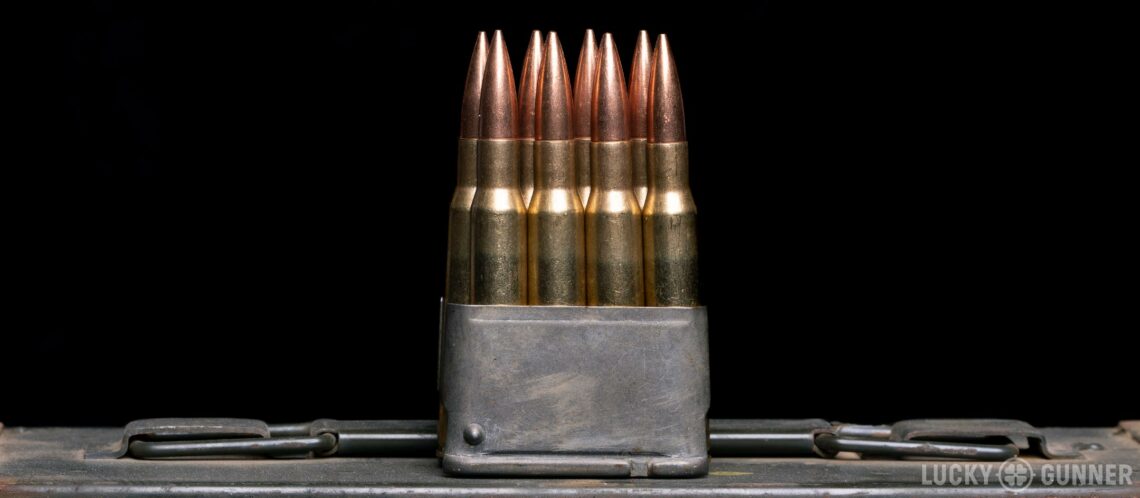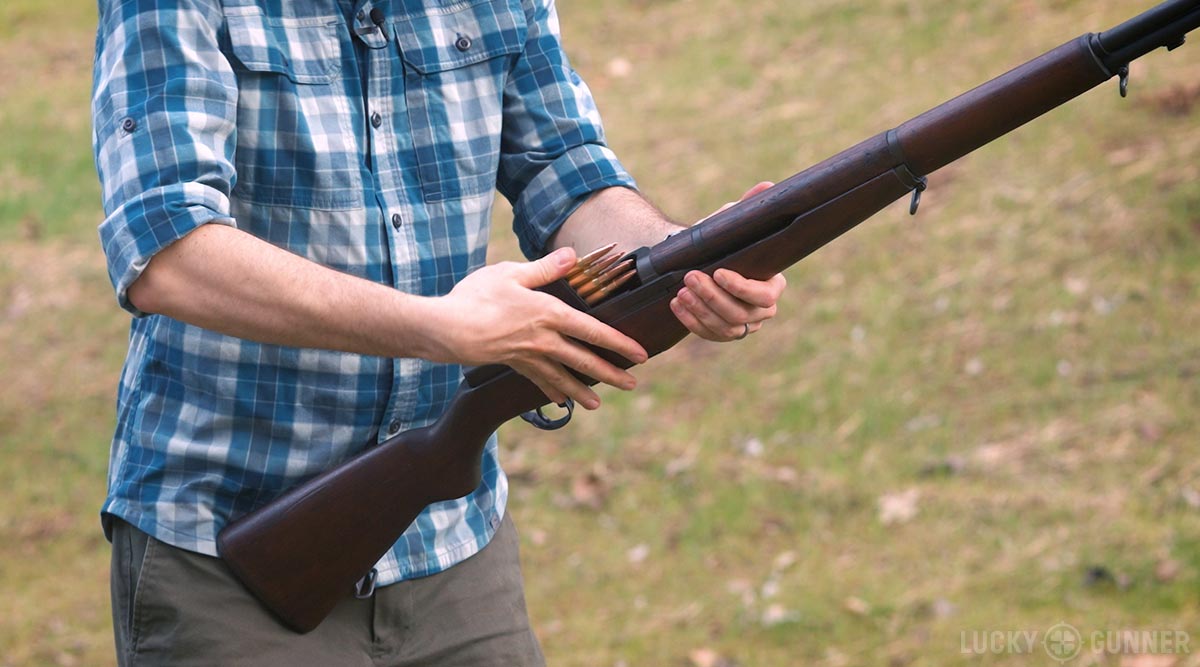As a follow-up to our video on the history of the M1, today we’re looking at keeping the Garand fed. A lot of M1 fans have been quick to bust the old myth that “you can’t top off a Garand.” It’s not technically true, but for the GI in combat, would it have been a feasible option?
Details in the video below, or scroll down to read the full transcript.
Hey everybody, Chris Baker here from LuckyGunner.com. I’m out at the range today with the M1 Garand to follow-up on something I mentioned in our last video which was all about the history of this rifle. The M1 was generally very well-liked, but it does have a couple of flaws that were sometimes mentioned by the soldiers who actually used them in combat. Weight is the main issue. The other one I mentioned last time is that it’s difficult to top off or reload the M1 before it’s completely empty.
I didn’t mean to imply in that video that it’s impossible to top off an M1. I should have phrased that differently because it can be done. But it’s not practical for a soldier in combat. I’m going to demo the different loading, unloading, and reloading options for the Garand, and I think that might help explain why certain procedures were probably not used in combat.
Standard M1 Garand Loading and Unloading Procedures
I’m going to load my M1 here with a full 8-round clip. I just open the action, pop the clip in there, push it down, and there we go. Now I’m loaded.
Normally, soldiers were trained to fire until the gun was empty and then reload from a full clip. But they may have had some administrative reason to unload. Or if they wanted to use the Garand’s grenade launcher attachment, they would have to unload the live rounds so they could load a clip of blanks.
So to unload, I would open the action, which ejects the round from the chamber. While holding the action open, I press the clip latch to eject the clip and the remaining rounds. I can let those pop out and fall to the ground, or I can place my hand over the action and catch them as they come out. Then I can reload with a fresh clip. That’s how the gun was designed to operate and most GIs would have been taught some variation of that procedure.
Topping Off a Partially Loaded Garand
Now, let’s say I’ve got a partially full gun and I want to get it back to full capacity without emptying it first. I would open the action and hold it open with one hand. Then I’ll take some loose rounds and just feed them into the clip.
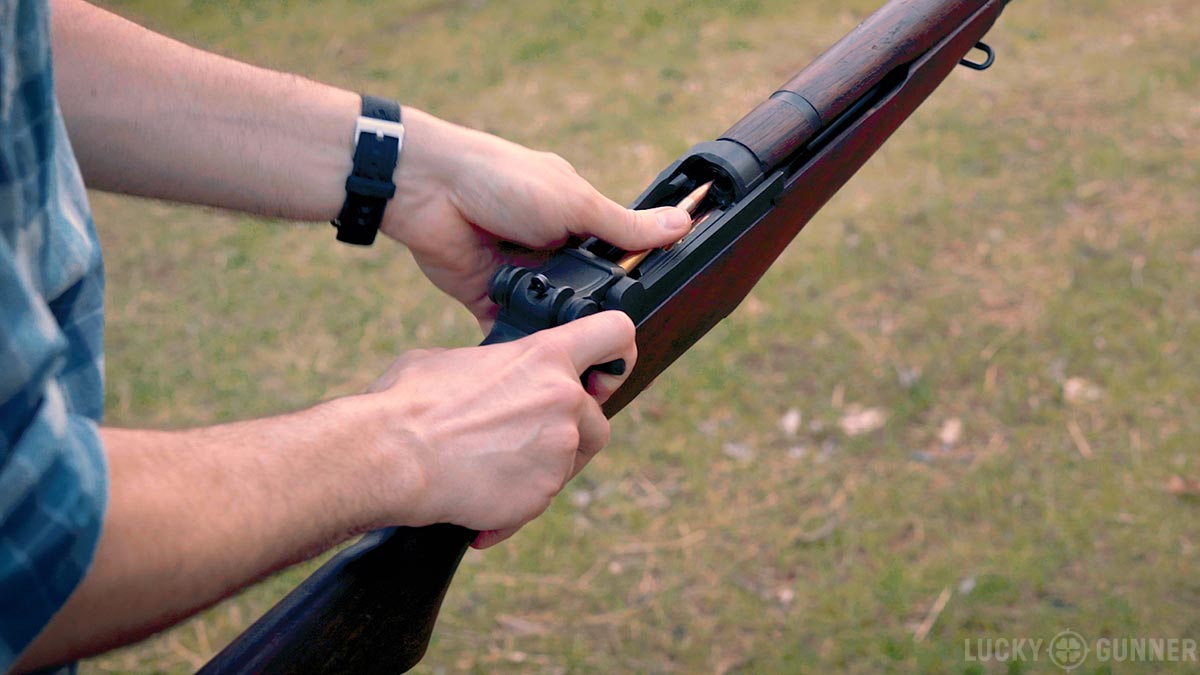
The internal magazine only holds seven rounds, so I’m not going to be able to fit that eighth round into the clip while it’s down in the action. If I really want that last round, I could manually load it into the chamber and then hold the clip down while I release the bolt so that it passes over that top round in the clip. [NOTE: It is not recommended to load a round directly into the chamber of an M1 due to the small risk of inducing an out-of-battery slam fire]
Another way to do this is to open the action, then press the clip latch, but only let the clip come about halfway out. Then release the bolt so that the bolt kind of pins the clip in place. That way, I don’t have to hold the bolt open the whole time while I fill up the clip. It’s possible, but difficult, to fit the eighth round in the clip when it’s in this position, so I’m just going to close the bolt with only seven in there.
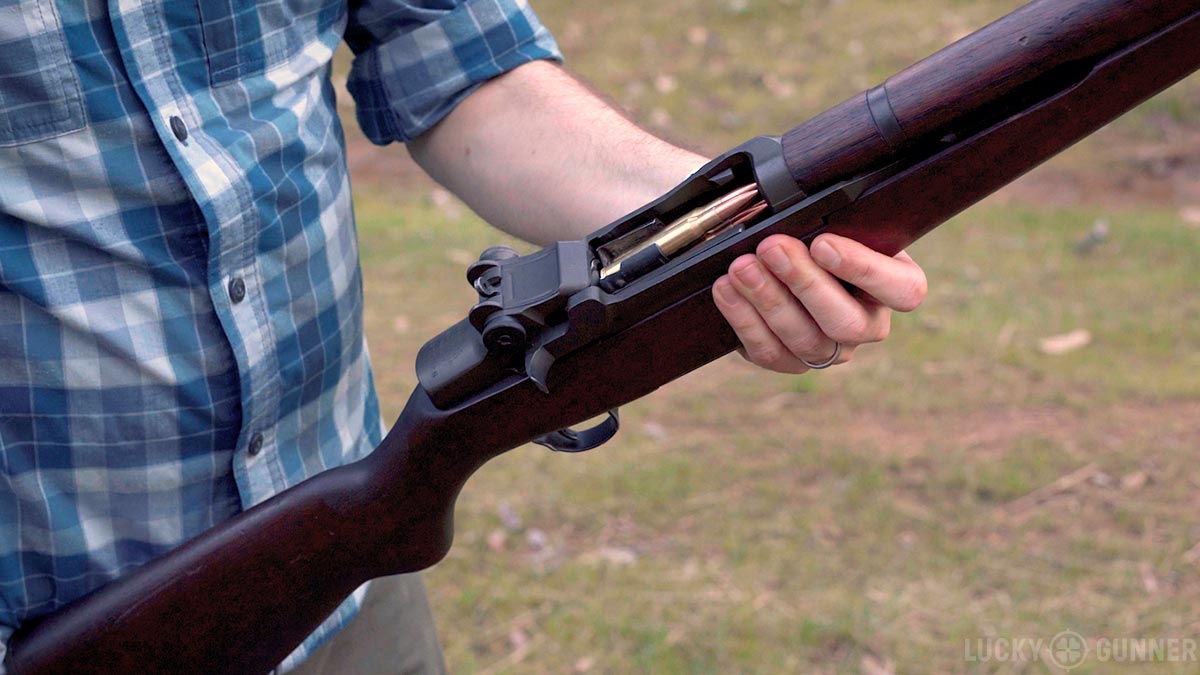
Was This A Realistic Reloading Method?
That’s all fine if you’re out for a leisurely day at the range, especially if you’ve got a nice shooting bench in front of you to support the rifle. But I think it’s pretty obvious why you would not want to attempt this in combat. It’s just a slow and awkward way to load the M1.
You could also try to argue that we don’t hear about soldiers topping off Garands because they just didn’t know about these techniques. But I find that difficult to believe. With over five million M1s that GIs carried every waking hour for months at a time, eventually some of those guys would figure out that you can top off a Garand. It may or may not have been common knowledge, but this is not some unknown secret that modern-day Garand owners have just figured out for the first time.
Another possibility is that soldiers just rarely had the need to top off their guns. That may have been the case for the kind of large-scale battles that we often associate with World War II and Korea. But wars involve many different types of combat situations.
I quoted Lt. Col. John B. George in the last video. He complained about not being able to top off the Garand and gave the example of a soldier with his unit assaulting an enemy position. He gets to the last piece of cover before he has to go charging into that bunker or trench or whatever. He’d really like to have a full weapon before he does that. Urban combat, fighting house to house, would probably be similar. For any kind of close quarters fighting, especially, I imagine you’d desperately want all eight rounds.
So let’s say I’ve got just a few short seconds before I have to make this assault. What are my options? I can take my chances with whatever ammo I’ve got in the gun. Hopefully one of my squadmates with a Tommy Gun or a carbine can go in ahead of me.
I could try to top off my rifle. Maybe I thought about this in advance and I’ve got loose rounds in my pocket and not just the loaded clips I was issued. How long would it take? I haven’t practiced this a whole lot, but for me to load four rounds directly into the action for a total of seven took about 18 seconds. Maybe somebody who’s really good could do it in half the time. That’s still nine seconds with a rifle that’s essentially disabled while I’m within spitting distance of an enemy position. It’s really easy to induce a feeding stoppage if you try to close the bolt at the wrong time. The whole operation occupies both hands. It’s just a lot to ask of somebody who’s being shot at.
My other option is to just fire off my remaining rounds and reload. Again, I’m not super well-practiced at this, but it only took me six seconds to crank off four rounds, reload, and fire again. It’s not ideal, but it’s faster and a lot less prone to user error.
Of course, I could also manually unload and reload. But that’s also kind of time consuming, and it’s really only beneficial if I’m trying to conserve ammo or avoid revealing my position.
Reloading other WWII-Era Firearms
Now, as a comparison, let’s look at what was required to top off some of the issued weapons from that era. With an M1 Carbine, BAR, submachine gun, or anything with a detachable box magazine, it’s pretty straightforward. Drop the magazine if you’re in a real hurry or save it for later if you can. Insert a fresh magazine.
The carbine mags are small enough that you might even be able to grab the fresh mag first and swap them out with the same hand. That really minimizes the amount of time the gun is without a magazine. In any case, you always have at least the round in the chamber that can be fired at any time so you’re not completely defenseless if you get caught mid-reload.
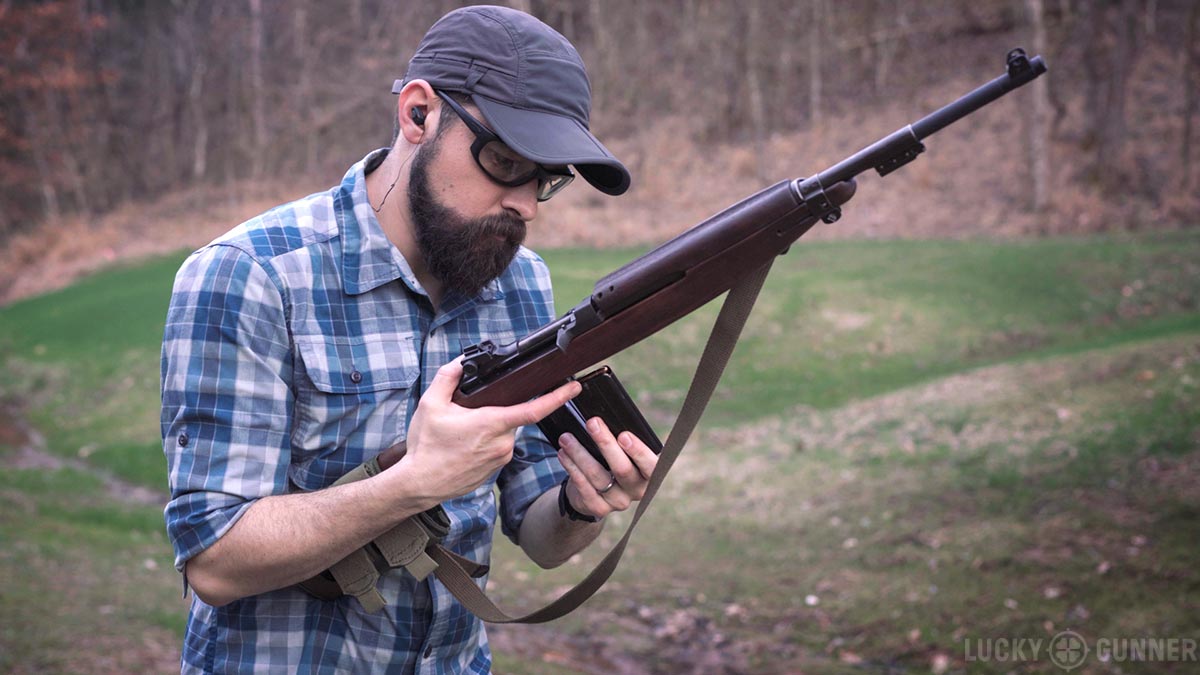
Now how about the 1903 Springfield? I would hate to be the guy running into a close quarters fight with a bolt action, but if you’ve got to do it, it’s pretty easy to top it off first. You do lose the round in the chamber when you open the bolt, so that’s less than ideal. But then it’s pretty easy to load. It only requires one hand at a time and you can keep the stock on your shoulder. This footage here was literally the first time I ever fired a 1903 and I did not have any trouble with this. The Garand was the better combat weapon in almost every other respect, but the Springfield was easier to top off.
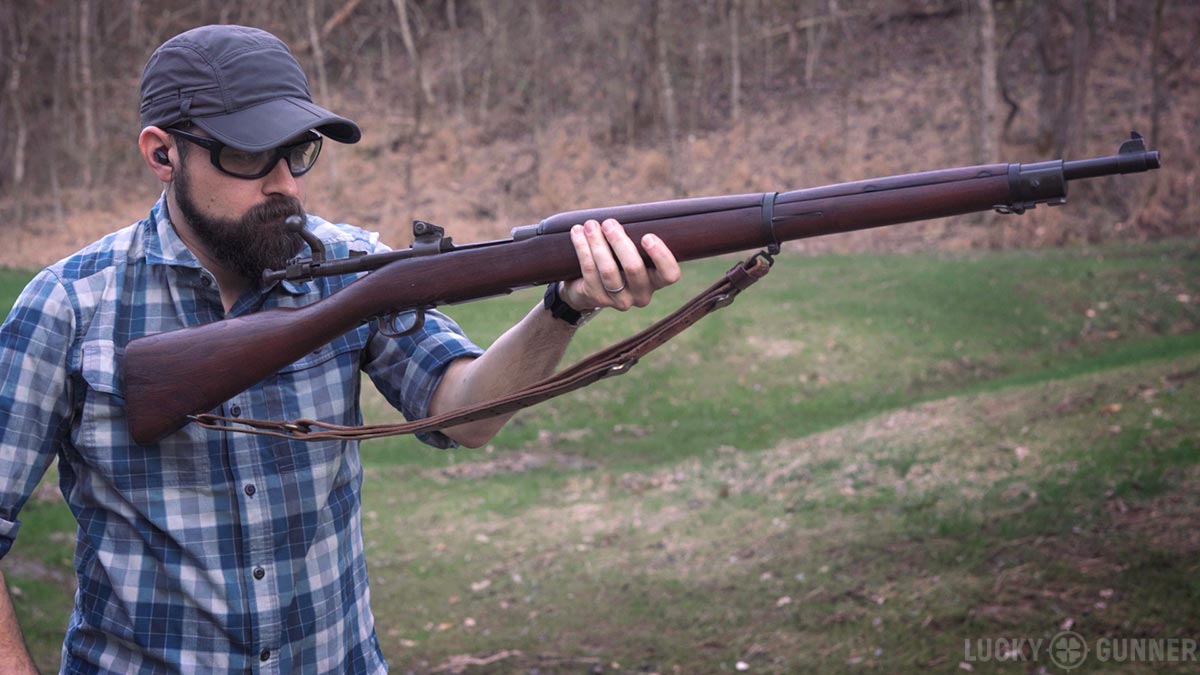
Col. George was a big fan of the magazine system from the M1941 Johnson rifle. The US did not officially adopt the Johnson, but a few of them did make their way out to the battlefield. It was a semi-auto with a 10-round internal rotary magazine. You would load it through a port on the side with single cartridges or 5-round Springfield clips. George really liked this design because you could load it any time with as many rounds as you needed without opening the action. If you’re only going to have ten rounds in the gun, a system like that has a lot of advantages even compared to a detachable box magazine.
The M1 Garand had a lot going for it. It probably was, objectively, the best infantry rifle issued in WWII. But I hope it makes sense now why the loading issue was a definite weakness of the design. If you guys enjoyed this, the next time you need some ammo, be sure to get it from us with lightning fast shipping at LuckyGunner.com!
